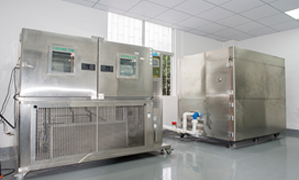
Reliability is defined as the probability of failure-free software operation for a specified period of time in a particular environment.
Reliability testing is performed to ensure that the software is reliable, it satisfies the purpose for which it is made, for a specified amount of time in a given environment and is capable of rendering a fault-free operation.
Acceleration testing
Temperature Cycle
High Temperature Operating Life (HTOL)
Temperature Humidity Bias/Biased Highly Accelerated Stress Test (BHAST)
Autoclave/Unbiased HAST
High Temperature Storage
Electrostatic Discharge (ESD)
Standard for reliability test, for example:
Environmental testing of electric and electronic products - Part 2: Test methods, test FC and guidelines: vibration (sinusoidal) GB / T 2423.10-2008 / IEC 60068-2-6:1995
Environmental testing of electric and electronic products Part 2: Test methods Test Fh: broadband random vibration (digital control) and guidelines GB / T 2423.56-2006 / IEC 60068-2-64:1993
Environmental testing of electric and electronic products Part 2: Test methods Test fi: vibration mixed mode GB / T 2423.58-2008 / IEC 60068-2-80:2005
-

Thermal Reliability Testing
Temperature Test -

Thermal Shock
Temperature shock testing -

Humidity Reliability Test
Humidity Reliability Testing -

Constant Temperature & Humid
Temperature 85 ℃ and the humidity is 85% -

Flammability Test
Material fire performance test -

ON-OFF Cycling
Electrical Reliability Testing
-
Contact us
- Spark Lab - Shenzhen
- Mr. Zhang
- 13902479643
- sparkrz@spark-oe.com





